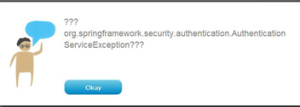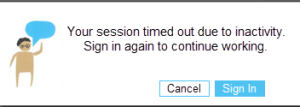 What is Information Experience?
What is Information Experience?
 Imagine you’re driving in your brand new Acura TL. It’s your first car, and you love how it drives. An icon appears on the dash with a bright orange exclamation point. What does this mean? You panic. Is something overheated? Is the engine going to explode? Should I pull over? Or should I ignore it and hope for the best?
Imagine you’re driving in your brand new Acura TL. It’s your first car, and you love how it drives. An icon appears on the dash with a bright orange exclamation point. What does this mean? You panic. Is something overheated? Is the engine going to explode? Should I pull over? Or should I ignore it and hope for the best?
![]() Now, if you had an icon like this one, wouldn’t your mind be a bit more at ease? A minor addition of text stating that the car requires service at 10,000 miles adds to the clarity and ensures that the message is important but not urgent.
Now, if you had an icon like this one, wouldn’t your mind be a bit more at ease? A minor addition of text stating that the car requires service at 10,000 miles adds to the clarity and ensures that the message is important but not urgent.
 Or maybe display a message reminding you to take your car in for service soon (assuming you can understand English, that is). This introduces new problems for translation.
Or maybe display a message reminding you to take your car in for service soon (assuming you can understand English, that is). This introduces new problems for translation.
All products (including software!) have content to enable users to do something, whether it is in the form of an image, words, or both in a particular product. The information is in the user interface (what you see when you’re using a product). Users rely on this information to get information they need and act on it quickly and easily. For example, you rely on the Power button on your coffee pot to know how to turn it on, right? You rely on a sign in link on your bank’s website to navigate to your account.
Great User Experience needs Great User Assistance
The goal is to design the intuitive and clear user interface, so that the need for massive volumes of “documentation” is eliminated (although sometimes additional content is needed). We are steering away from creating traditional “documentation”, such as user guides, installation guides, PDFs, and so on. We want the information experience to be seamlessly integrated into the entire user experience.
Information development plays a crucial role in the collaboration with design teams to provide users with an exceptional, intuitive, and even fun information experience in the user interface. Great user experience NEEDS great content. Information Developers (also known as Tech Writers in the olden days, Information Experience, User assistance, content developers, and so on) apply proven principles of how users read and consume information. This helps to simplify user tasks, increase productivity, and reduce frustration among users.
Collaboration with UX
As a User Assistance Developer, I work closely with design teams and product owners early in the product lifecycle. I have a new perspective on my job, I’ve learned some new skills I can offer, and gained valuable experience on simplifying the user experience. The best help the user can get is if they don’t even know they’re getting help! And the best compliment a product can get is that it is easy to use (rather than cursing at the software while they’re using it!).
I’ve been in software development for many years, and my job has changed and evolved into what it is today. I expect it will continue to change in the years to come. I am focusing primarily on the information experience, content strategy, and usability. By inserting myself into new areas, I now have experience in user research, prototyping, design, and usability. The content strategy I create at the beginning of the project helps lay out what information the user will need and when they need it. But you have to know your user, right?
User Assistance Developers are often the first line of quality assurance in many products. I am involved with the project from the beginning and I am probably one of the few people that knows the most about the end-to-end product. I advocate for users and I want them to have what they need, when they need it!
Writing for Interaction
The information experience includes the text in the user interface, the interactions, and the visual design. As a result, it is crucial for information developers and designers to work together closely to design an effective and engaging experience. We no longer just create documents to explain a confusing and unintuitive interface, but we collaborate and contribute to the user interface, so that it enables users to do what they need to do.
Tips for Creating a Great User Experience
Here are a few best practices to keep in mind to create an enjoyable user experience.
 Know Your Users
Know Your Users
Who are your users (or personas)? What do they need to accomplish? What are their pain points? Have you met with them in their environment? You need to have this information to determine the type and amount of information users need, depending on their role and what they need to get done. Otherwise, you’ll be creating content for a mystery user that may or may not get any use out of it. You can clearly see that the Trulia app below is for people looking for a home. In their uncluttered screen, each icon and text is crystal clear as to its purpose.
This mobile app is aimed at users looking for homes for sale, apartments for rent, and open houses.
Turbotax allows normal users like you and me to attempt to do our taxes. How scary is that? What are you thinking when you start? What if I’m audited? What if I make a mistake? Turbotax starts off with message to put you at ease, well, sort of. Even when you write an error, explain it and what to do.

Integrate User Assistance into the Interface

On-screen text helps users understand what these settings actually mean.
What companies usually come to mind that have a great user experience? Apple, of course (at least most of the time!) By providing embedded assistance into the application as part of the feature, you can guide the user to complete a task. I had no idea what iCloud Photo Sharing versus My Photo Stream does unless I saw the description below it.

Or integrate hints and tooltips into your user interface, like in this Scrabble-like game.
Create Guidelines
 Set guidelines for tone, language, terminology, and typography to ensure the information experience is consistent across the application. Buttons should be consistently placed so the user doesn’t have to guess which one is OK and which is Cancel. Also, be sure that the tone is appropriate for your audience.
Set guidelines for tone, language, terminology, and typography to ensure the information experience is consistent across the application. Buttons should be consistently placed so the user doesn’t have to guess which one is OK and which is Cancel. Also, be sure that the tone is appropriate for your audience.
 This improves the user’s ability to scan, read, and understand how to interact with the app. Don’t make me think, just put the buttons consistently and where I can find them. You ever see the OK and Cancel buttons reversed and select the wrong one? Consistent UI elements reduce mistakes and lets the user know what to expect. This is sure to confuse anyone!
This improves the user’s ability to scan, read, and understand how to interact with the app. Don’t make me think, just put the buttons consistently and where I can find them. You ever see the OK and Cancel buttons reversed and select the wrong one? Consistent UI elements reduce mistakes and lets the user know what to expect. This is sure to confuse anyone!

Appropriate tone and buttons for your specific users…maybe kids?
This drawing app takes a more casual tone for their audience by saying “Yo” and “Give Luna some company by drawing her good friend Moe”. And how much more clear can they be with their buttons Export and Don’t Export? I love it! It suits the app’s audience (persona) perfectly!
Create task-based content
Focus on providing the right content for an entire workflow and for each single task. Break down large procedures into smaller, more manageable individual tasks so that users don’t get lost in a sea of steps. Three ten-step tasks are easier to follow than a single thirty-step task.

But certainly not THIS website! Where do I begin? Which task comes first?

From the Waze app. Tasks and wording are easy to follow.
Create helpful messages at the right time
Do you enjoy getting messages like these? And no, it’s not OK, I don’t want to click on that button!



These are much more useful messages. Right?



A Few Challenges
One of the main challenges we face is getting product teams to understand the importance of bringing in an information developer (user assistance, information design) from the start. This can help the team craft the application’s user interface as a unified source of information. This is much easier to achieve at the beginning of a project, rather than trying to fix something that is close to final development. We need to earn the confidence from developers and designers on what we can do to enhance the user experience. The more we do these tasks, the easier it gets to work with other teams.
Information designers face another challenge with developers are not always native English speakers, so the text in the designs is sometimes unclear or incorrect. Having an information designer responsible for the UI labels and strings, messages, on-screen text (any text that appears in the product’s UI), ensures that the information is clearly defined and consistent so that users will have a more successful user experience.
References
Writing for Interaction: Crafting the Information Experience for Web and Software Apps http://www.amazon.com/Writing-Interaction-Crafting-Information-Experience-ebook/dp/B00BQWUB96
Tell your business story. Shape the Information Experience.
https://experience.sap.com/skillup/creating-a-successful-information-experience-for-users/